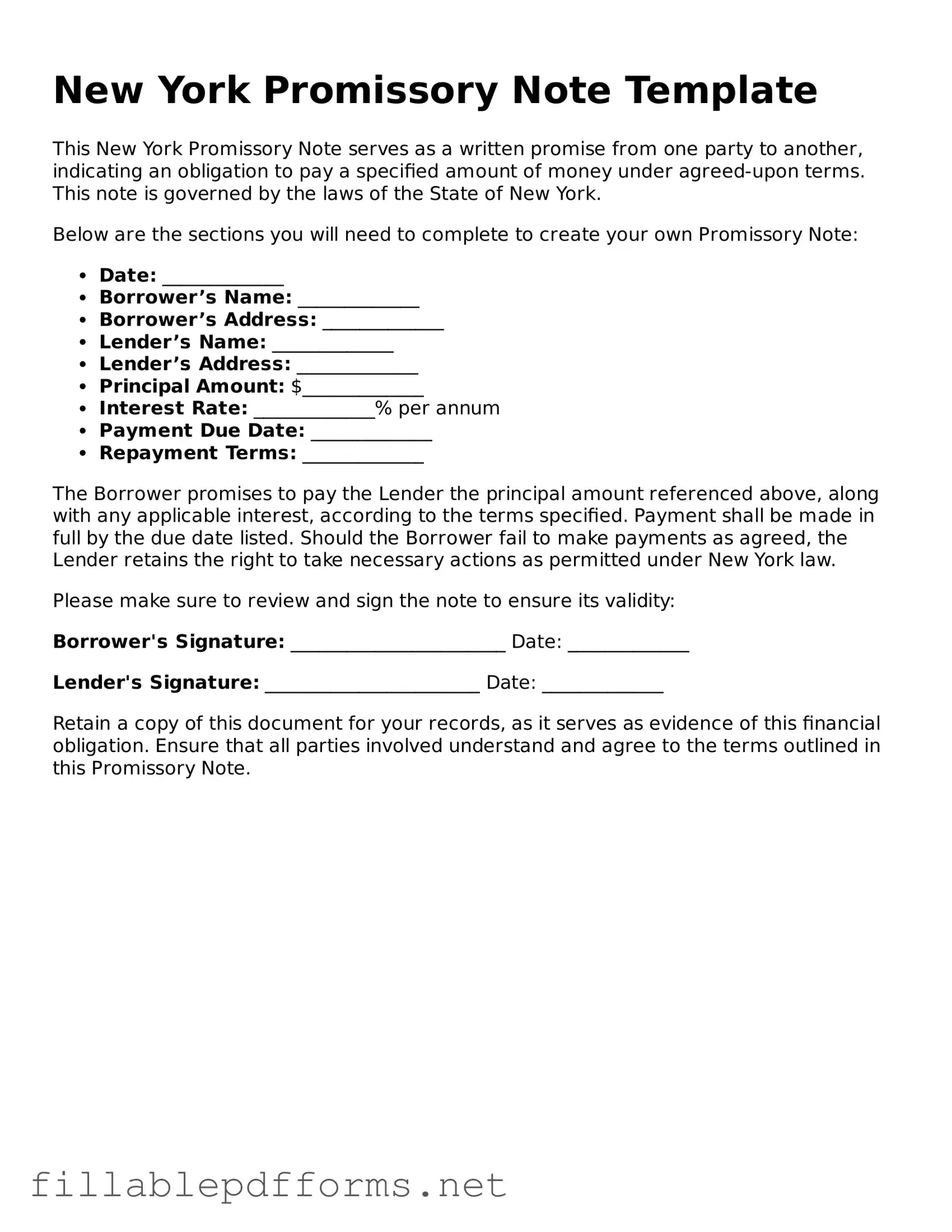Attorney-Verified Promissory Note Form for New York State
A New York Promissory Note is a legal document in which one party promises to pay a specific amount of money to another party under agreed-upon terms. This form serves as a written record of the debt and outlines important details such as the repayment schedule and interest rate. Understanding this document is essential for both lenders and borrowers to ensure clarity and enforceability in financial transactions.
Launch Editor Here
